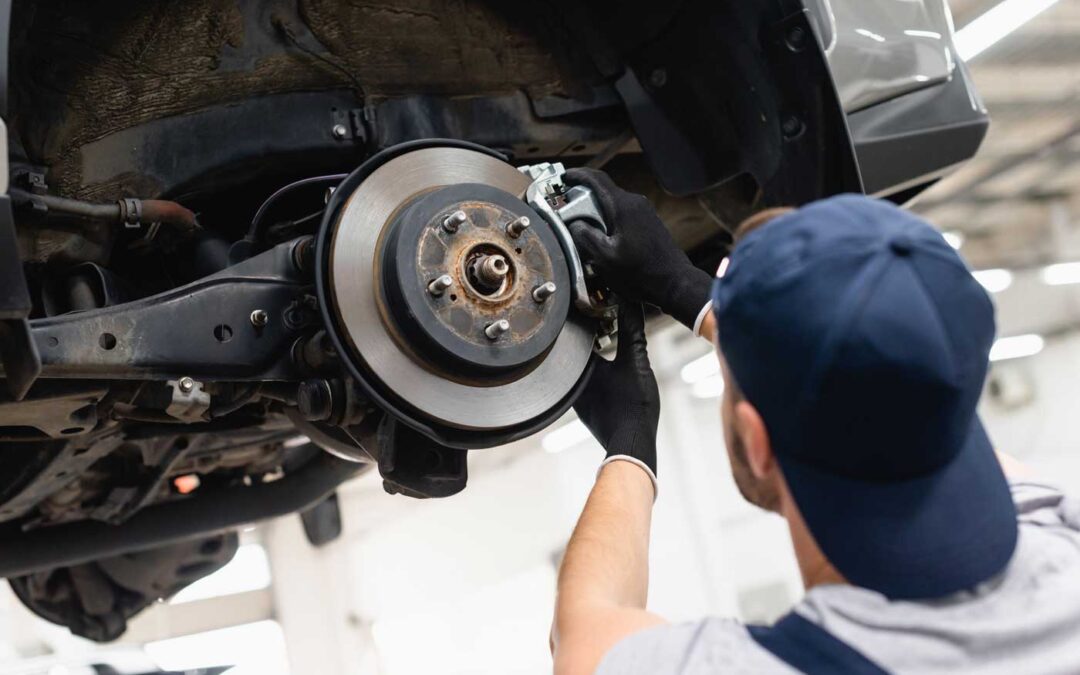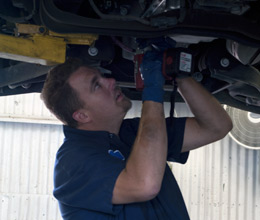Getting a brake inspection about every six months is the recommendation you’ll hear most often from mechanics and technicians. Normally, brake inspections are done with tire rotations during your regular scheduled maintenance – outlined by your manufacturer in your owner’s manual.
Brake Parts and Brake Fluid
The brakes in your vehicle have a number of moving parts that need to be inspected periodically to ensure optimal performance. Pads, calipers, rotors, and the supports for your calipers can all wear down over time, so coming in to All Around Auto Repair is a good idea.
A brake inspection should, overall, really be thought of along the same lines as more periodic maintenance like oil changes. In the same way that you oil and oil filter should be changed out every few thousand miles, brake inspections should occur more frequently than the 30-60-90 rule that you might have already heard about. What is this 30-60-90 rule that you speak of?
30,000 Mile Marker for Multiple Filters
In short, these numbers refer to the mile markers for different types of vehicle maintenance. Basically, a lot of your filters, including your air filter and fuel filter, can go about 30,000 miles between change outs.
The air filter helps your engine to breathe, and a properly functioning fuel filter keeps dust and rust from the fuel itself. These might not be the sexiest parts of your vehicle, but they’re extremely criticial to its functioning.
Brake Parts Degrade Around 60,000 Miles
Tire rotations and brake inspections should occur about every 6,000 miles. Now, although you should absolutely have your brake inspection with your tire rotation more frequently than these 30-60-90 intervals, there are a number of parts of your braking system that should be replaced at the 60,000 mile interval.
These might include your brake pads, shoes, brake rotors, and even brake fluid.
In addition to all of the brake parts just mentioned and the ones mentioned further above (e.g., calipers and rotors) your brakes will need brake fluid in a similar way that your transmission needs the right fluid to function optimally. Your brakes, obviously, are a unique system all their own – a hydraulic system, at that.
Your Brake’s Hydraulic System Needs TLC
The word hydraulic itself implies that you’re going to have a liquid moving in a confined area under tremendous pressure. The reason that you need to change out your brake fluid is that doing so ensures that your brake’s hydraulic system isn’t overun with water, which will lower the boiling point and potentially turn the water into a compressible gas.
That’s clearly not what you want since that would be antithetical to your brakes functioning properly. If you’ve noticed a squishy brake pedal then your brake’s hydraulic system may have hit the skids. The thing to do is take your vehicle in to All Around Auto Repair to bleed your brake’s hydraulic system of the fluid that might be causing the problems.
Flushing and putting in new brake fluid at least every 60,000 miles is recommended by almost every owner’s manual. Many vehicle owner manuals call for changing out the brake fluid every 20,000 miles!
Now, that’s only brake fluid. With brake pads, you might have to swap out this disposable part every 50,000 miles. When brake pads start to wear out you might notice a screeching sound (very unpleasant!) and difficulty braking (very dangerous!). That’s why your brake pads should be changed out approximately every 50,000 miles.
Your brake rotors should go about the same time before getting swapped out. Think of this like a baseball manager handing the ball from the starter to the reliever pitcher – a passing of the baton, if you will.
Brake Inspections at All Around Auto Repair
Because all parts of your brakes are working together, you’ll probably want new brake rotors as well; brake rotors function by applying pressure to your brake pads, which forces the pads closer to the rotors (discs).
Brake rotors, you guessed it, should be replaced about every 50,000 miles as well. By getting a regular brake inspection you’ll be assured of sidestepping a lot of these problems and staying on schedule!
Brake Maintenance FAQ
1. How often should I get a brake inspection?
It’s recommended to get a brake inspection every six months or during your regular tire rotations, which often happen every 6,000 miles. Regular inspections help ensure your brakes are working efficiently and can prevent costly repairs.
2. What are the main components of the brake system that should be checked during an inspection?
A brake inspection involves checking key parts like the brake pads, calipers, rotors, and brake fluid. These parts can wear down over time, and ensuring they’re in good condition is crucial for your vehicle’s braking performance.
3. Why do brake inspections need to be done more frequently than the 30-60-90 rule?
The 30-60-90 rule refers to maintenance tasks typically done at 30,000, 60,000, and 90,000 miles, such as changing filters or spark plugs. Brake inspections, however, should be done more frequently, about every 6,000 miles, because brakes are vital for safety and can wear down more quickly depending on driving habits.
4. When should brake parts like pads, rotors, and fluid be replaced?
Brake pads usually need to be replaced every 50,000 miles, while rotors should be replaced around the same time. Brake fluid, on the other hand, should be flushed and replaced every 60,000 miles, but some manuals recommend changing it every 20,000 miles to ensure the hydraulic system functions properly.
5. What happens if I don’t change my brake fluid regularly?
Over time, brake fluid can absorb water, which lowers its boiling point and can turn into compressible gas, leading to brake failure. If you notice a “squishy” brake pedal, it’s a sign that the brake’s hydraulic system might be compromised. Flushing the brake fluid ensures the system stays responsive and safe.
6. How do I know when to replace my brake pads?
You’ll usually notice a screeching sound when your brake pads are worn down. This unpleasant noise, along with difficulty braking, means it’s time to change them. Brake pads are a disposable part and typically need to be replaced every 50,000 miles.
7. Why do brake rotors need to be replaced?
Brake rotors work with brake pads to stop your vehicle by creating friction. As they wear down, they lose effectiveness, which can lead to longer stopping distances. Replacing your brake rotors every 50,000 miles helps maintain optimal braking performance and ensures your vehicle remains safe.
8. What’s involved in a brake inspection at All Around Auto Repair?
At All Around Auto Repair, a brake inspection checks the entire brake system, including pads, rotors, calipers, and brake fluid. By staying on top of these inspections, you can catch issues early and avoid more serious and expensive brake problems down the road.




